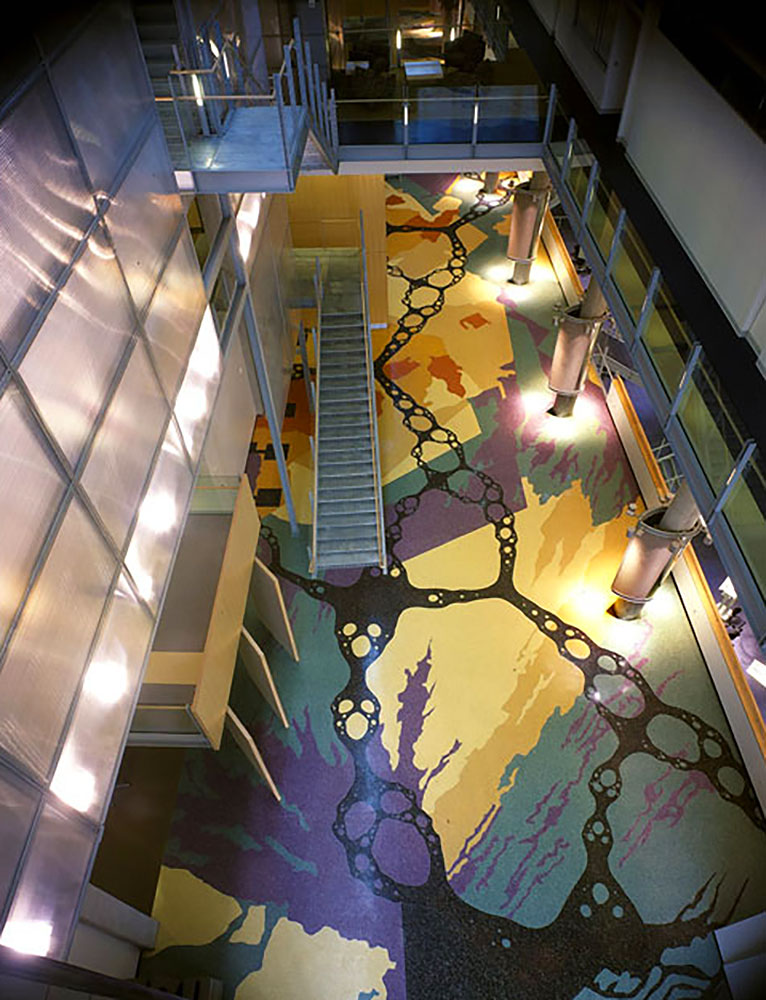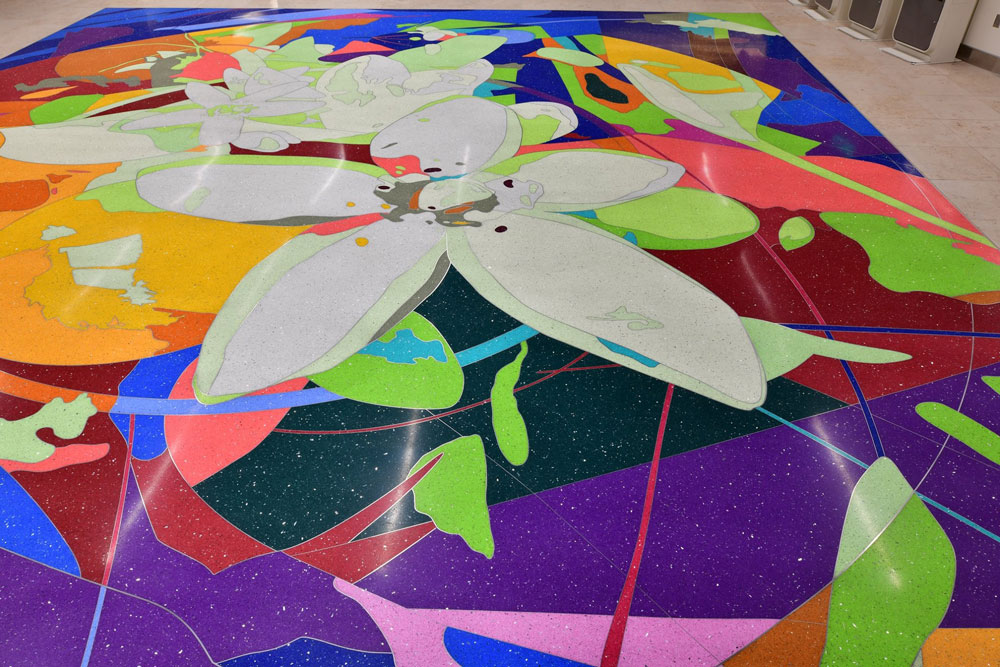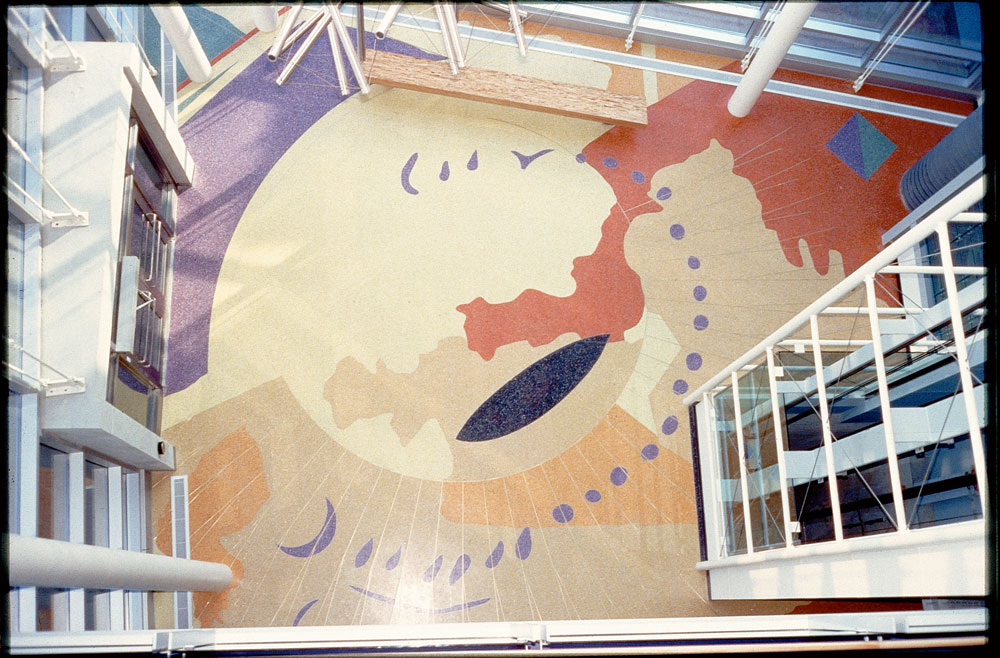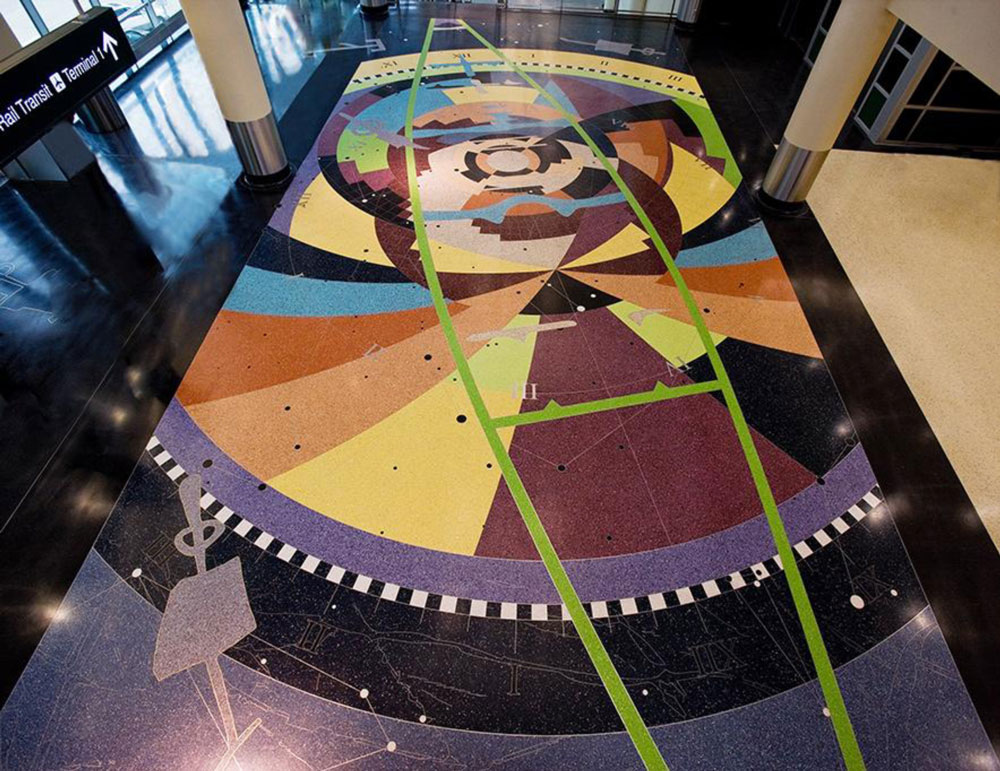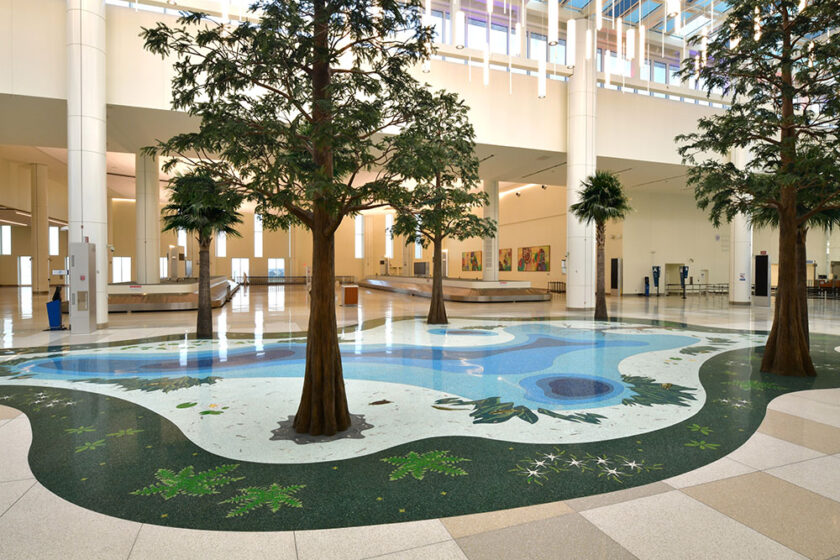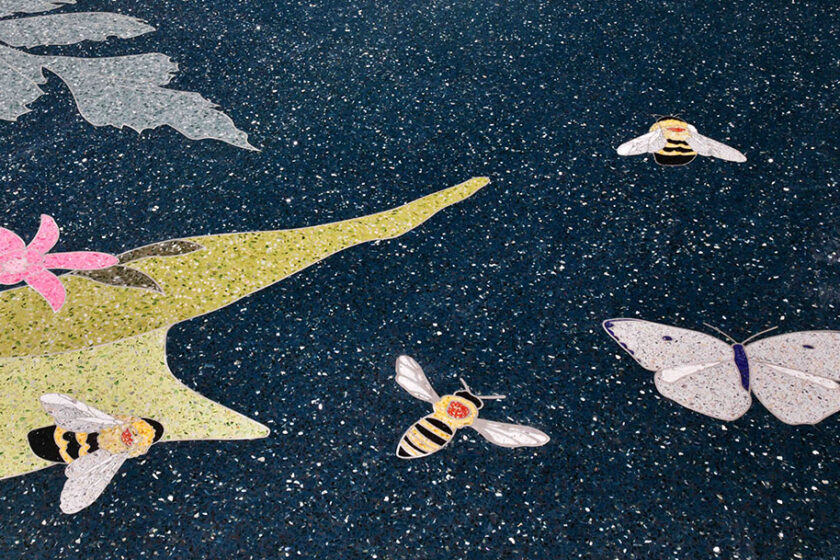How to Conquer the Unlimited Color Palette of a Custom Terrazzo Installation
Scott Parsons of North Dakota, an award-winning international artist, has designed several recognized terrazzo floors. The first terrazzo installation he created was named the National Terrazzo & Mosaic Association (NTMA) Job of the Year in 2002. The 10,000 square-foot epoxy terrazzo floor in seven colors, “Algorithmic Tapestry,” is at the University of Wisconsin Madison Engineering Center.
Parsons’ winning streak continued with Minneapolis-St. Paul International’s 2014 Starwheel and Orlando International Airport (2019). In 2012, he also designed an artistic terrazzo installation for Ft. Lauderdale-Hollywood International’s concourse F.
Due to his training and graduate degree in painting, Mr. Parsons approaches designing in terrazzo as a painter and as now a highly experienced designer of artistic terrazzo. If you’re considering terrazzo as the medium for your next design, he offers a few tips on getting started in creating a custom terrazzo floor from the unlimited color possibilities.
Libraries & Books
Your first step is to talk to your NTMA-member terrazzo contractor, Mr. Parsons advised. Not only are they your best natural partner in bringing your project to a successful finish, but they will also have libraries of past projects and design collections. Digital design programs are another resource for palette harmonies on which to base initial color selection.
Practically speaking, when considering color harmony, a color deck from any paint manufacturer is the terrazzo designer’s essential tool, he said. Seeing thousands of colors next to each other, you can tweak them a shade darker or lighter, or more intense, or a shade toward gray or green. Mr. Parsons uses a version with color stickers that can be arranged and checked out next to each other.
An epoxy resin manufacturer will translate choices from a color deck to their best match and create a sample. Epoxy resin manufacturers also provide color books.
The Common Chip
Getting familiar with the aggregate chip options and the aesthetics each type offers is another key step in developing your color palette in terrazzo. Choices range from colored or clear glass, shells, and recycled porcelain, to classic marble and granite. Some other creative aggregate uses have included walnut shells and metal disks and shavings. Variations in size of aggregate and limitless blends can be used to create the desired outcome.
“Any artist or designer will tell you unity is the most important thing so that all elements belong,” Mr. Parsons noted. You can have some contrast, but most colors should have some chips in common, which helps unify the palette. As he comes across terrazzo floors, he notices that the more disjointed ones lack chips in common from one mix to the next.
Samples
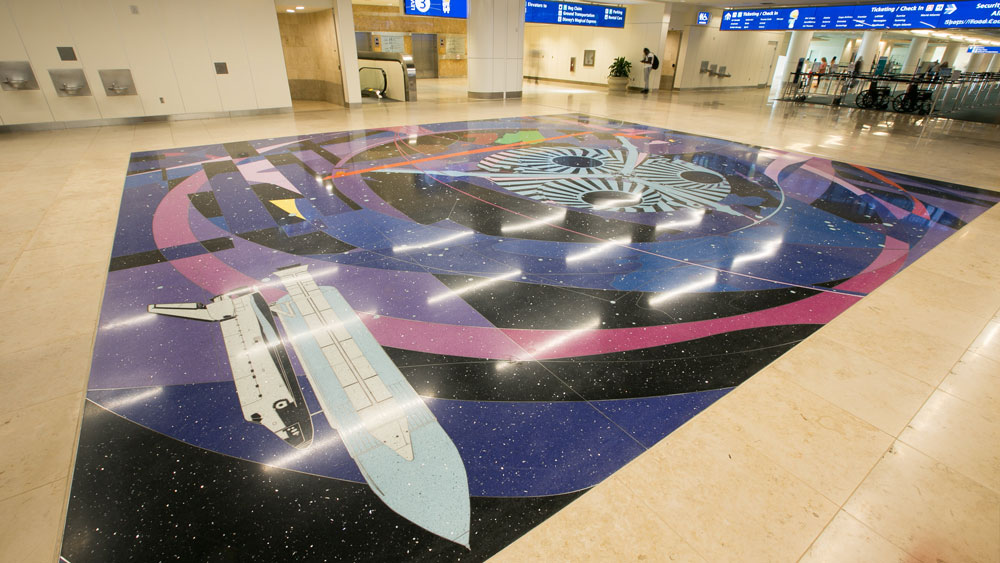
“Don’t rely on the computer,” Mr. Parsons advised. “Get physical samples.” Aggregate suppliers can send out sample boxes of aggregates, whether Italian, American chip, glass, mother-of-pearl, porcelain, or synthetic. With the rocks, especially, he recommends spraying them down to get a truer picture of how they will look in epoxy resin.
You will refine the recipes for your chip mixes combined with the epoxy colors through the sampling process. Mr. Parsons reported that he might go through four to six rounds of samples, which takes time. The more a terrazzo designer gains experience, the greater advantage they have in streamlining that process.
Local Color
As Mr. Parsons works in different areas of the country, he always looks for the right palette to fit that context. The Orlando airport has Florida colors, he said; it “shares the excitement of the region” with “a lot of pop.” The colors in Minnesota’s airport are drawn from the local grass prairies and rock engravings.
Sharing Space
When designing an artistic treatment of one section of a building, Mr. Parsons always connects with the architect to get his or her drawings and thoughts on the building’s architectural gesture or intent. Having an understanding of the space is imperative.
“The architect might talk about transparency or openness or flow,” he explained. “I look at samples for the rest of the floor and take into account all those elements to create my part.”
Right now, Mr. Parsons is working on two areas of new terrazzo in the Charlotte airport. His work will interact with an established pattern, existing signage, and predominant colors throughout the airport, with three other terrazzo artists involved in new designs. He is looking to create a look that both complements and contrasts with the whole. “I want to respond to what else is there,” he explained. “If I ignore it, my part will feel like it doesn’t belong.”
Upscaling
The selection of colors can be complicated by the change in scale from a drawing to a floor. “Even architects are sometimes surprised by what their buildings look like,” Parsons noted.
Imagining how colors will translate to the larger format can be one of the main challenges in designing a terrazzo floor. It’s similar to painting a house and going from samples to walls and achieving the desired look. He cautions that the larger the space, the more intense a color will appear.
